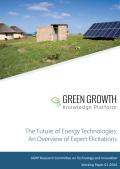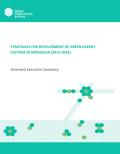The green growth transition will be large, system-wide and structural. In other words, a new industrial revolution. This will require new green growth policies that foster economic growth and development while ensuring that natural assets continue to provide the resources and environmental services on which our well-being relies (OECD, 2011). More and better evidence is needed to support the design of effective green growth policies and to understand their impact on the economy. This policy brief summarises the main policy implications of a two-year research programme, sponsored by the Global Green Growth Institute (GGGI), which aimed to contribute to the growing evidence base.

This letter analyzes the distributional effects of a carbon tax reform when households must consume carbon-intensive goods above a subsistence level. The reform is progressive if revenues are recycled as uniform lump-sum transfers, in other cases it is regressive.

In Mongolia, GGGI has worked with the Government to explore a variety of scenarios and possible mixes of energy systems. The analysis reflected in this slim volume is an initial review of data and trends in Mongolia. The challenge in the next step is to convert these initial insights into policies and regulations that are implemented consistently over time. Success of these policies will also depend on the positive collaboration between the public and private sector.
An overview of the distributional impact of global warming shows that the negative externalities of carbon-intensive development models are already significant in Africa. The most compelling reasons for promoting green investments in Africa is the direct economic returns in terms of savings and employment opportunities. Most renewable energy jobs created over the last few years have occurred outside Africa possibly another missed opportunity after the information and communication technology (ICT) revolution. Carbon-free technologies must not be used to sustain income inequality and macroeconomic imbalances between industrialized and developing countries, but to uniformly boost green investments.
